For Session 4 of TED2020, experts in biohacking, synthetic biology, psychology and beyond explored topics ranging from discovering the relationship between the spinal cord and asparagus to using tools of science to answer critical questions about racial bias. Below, a recap of the night’s talks and performances.
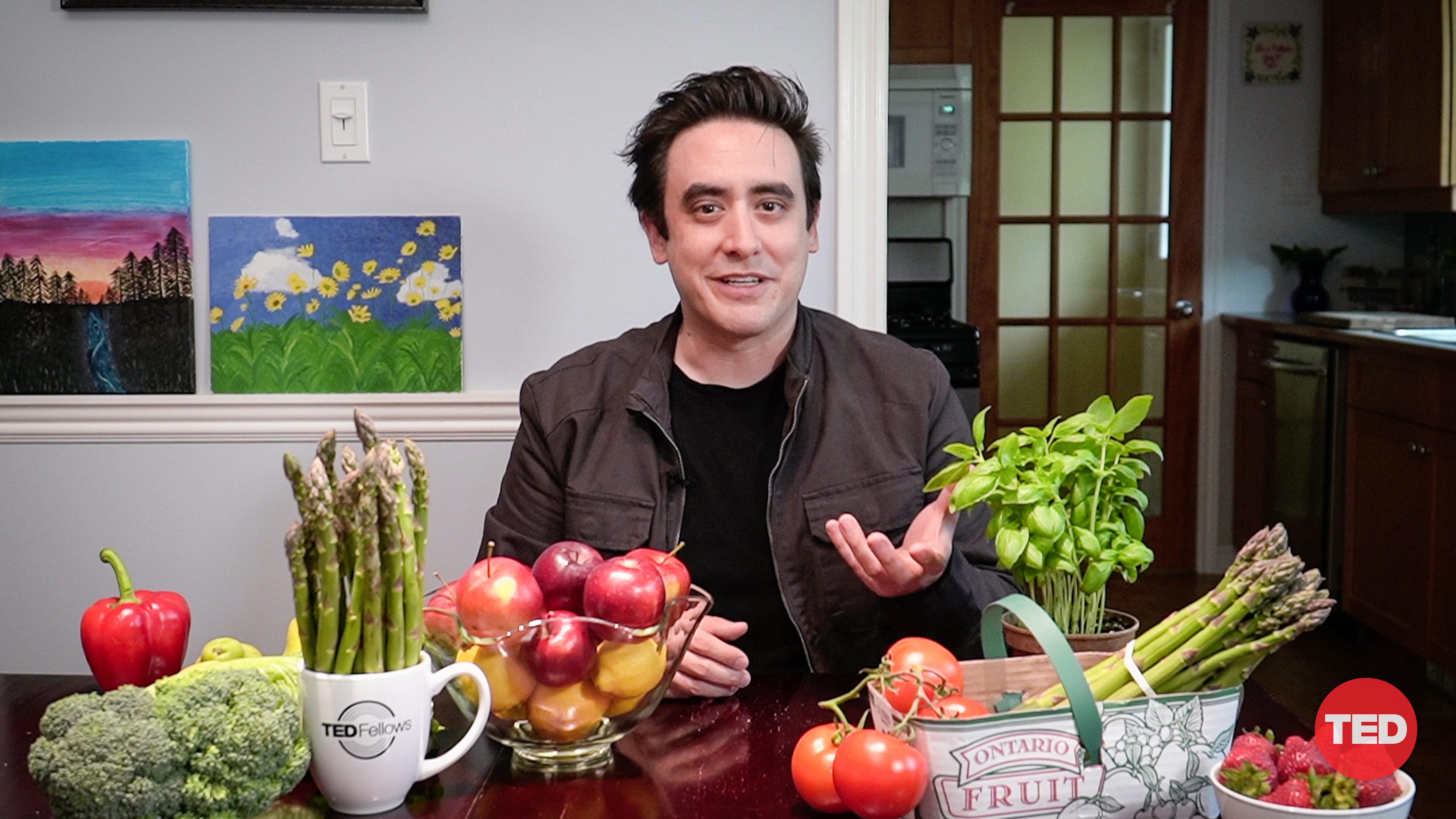
“Every scientist can tell you about the time they ignored their doubts and did the experiment that would ‘never’ work,” says biomedical researcher Andrew Pelling. “And the thing is, every now and then, one of those experiments works out.” He speaks at TED2020: Uncharted on June 11, 2020. (Photo courtesy of TED)
Andrew Pelling, biomedical researcher
Big idea: Could we use asparagus to repair spinal cords?
How? Andrew Pelling researches how we might use fruits, vegetables and plants to reconstruct damaged or diseased human tissues. (Check out his 2016 talk about making ears out of apples.) His lab strips these organisms of their DNA and cells, leaving just the fibers behind, which are then used as “scaffolds” to reconstruct tissue. Now, they’re busy working with asparagus, experimenting to see if the vegetable’s microchannels can guide the regeneration of cells after a spinal cord injury. There’s evidence in rats that it’s working, the first data of its kind to show that plant tissues might be capable of repairing such a complex injury. Pelling is also the cofounder of Spiderwort, a startup that’s translating these innovative discoveries into real-world applications. “Every scientist can tell you about the time they ignored their doubts and did the experiment that would ‘never’ work,” he says. “And the thing is, every now and then, one of those experiments works out.”
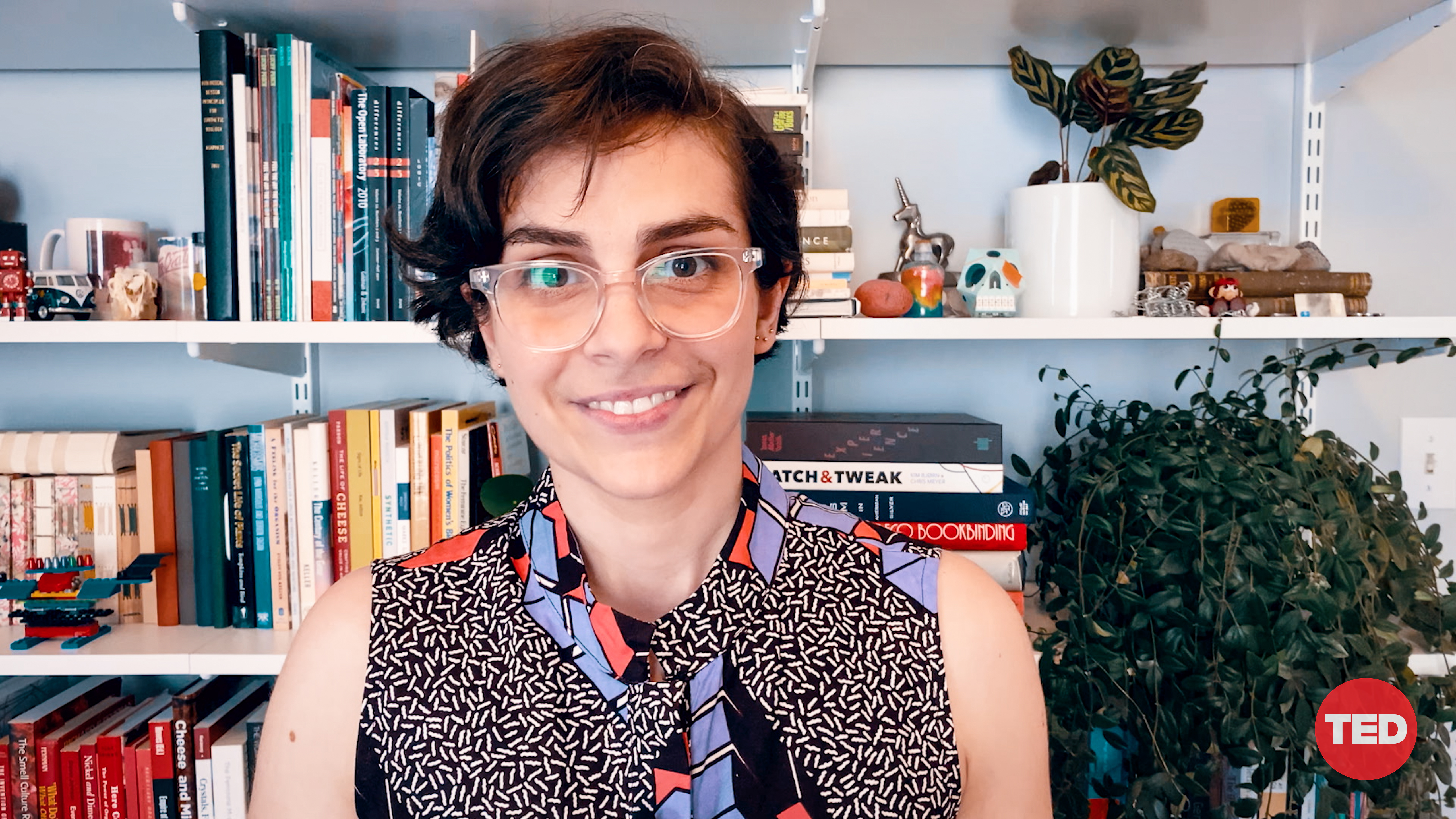
Synthetic designer Christina Agapakis shares projects that blur the line between art and science at TED2020: Uncharted on June 11, 2020. (Photo courtesy of TED)
Christina Agapakis, synthetic designer
Big idea: Synthetic biology isn’t an oxymoron; it investigates the boundary between nature and technology — and it could shape the future.
How? From teaching bacteria how to play sudoku to self-healing concrete, Christina Agapakis introduces us to the wonders of synthetic biology: a multidisciplinary science that seeks to create and sometimes redesign systems found in nature. “We have been promised a future of chrome, but what if the future is fleshy?” asks Agapakis. She delves into the ways biology could expand technology and alter the way we understand ourselves, exposing the surprisingly blurred lines between art, science and society. “It starts by recognizing that we as synthetic biologists are also shaped by a culture that values ‘real’ engineering more than any of the squishy stuff. We get so caught up in circuits and what happens inside of computers that we sometimes lose sight of the magic that’s happening inside of us,” says Agapakis.
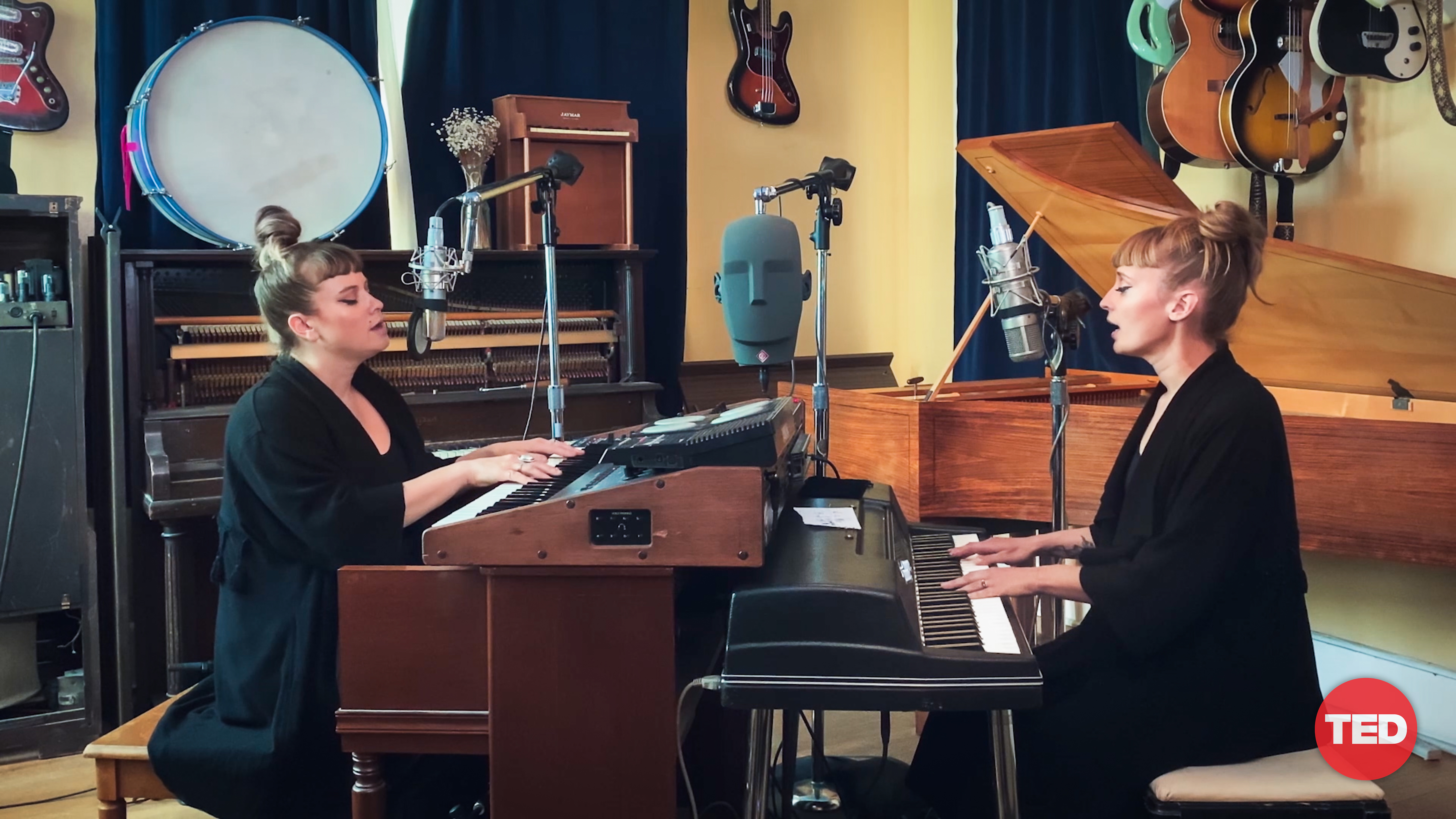
Jess Wolfe and Holly Laessig of Lucius perform “White Lies” and “Turn It Around” at TED2020: Uncharted on June 11, 2020. (Photo courtesy of TED.)
Jess Wolfe and Holly Laessig of indie pop band Lucius provide an enchanting musical break between talks, performing their songs “White Lies” and “Turn It Around.”
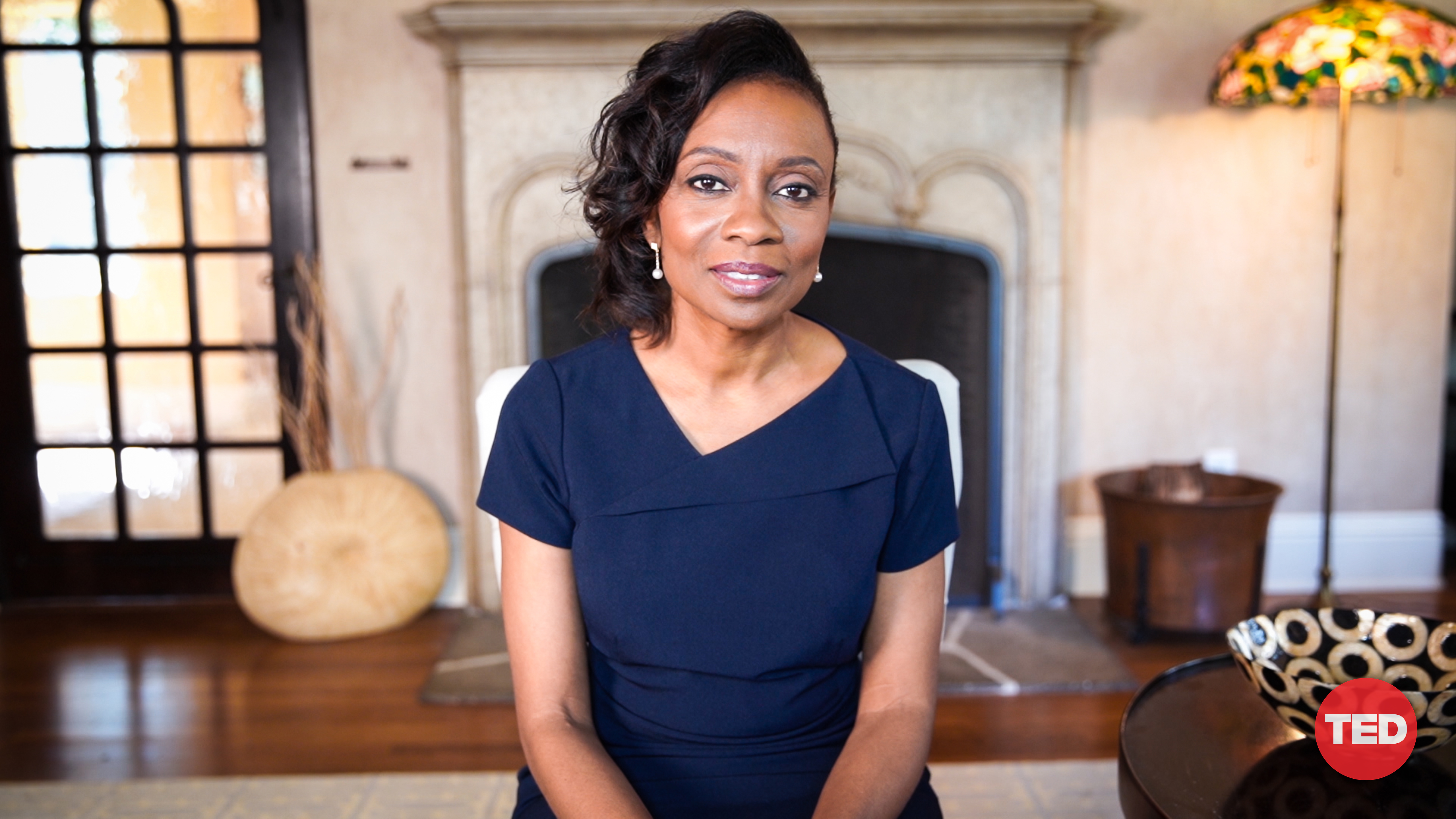
“[The] association with blackness and crime … makes its way into all of our children, into all of us. Our minds are shaped by the racial disparities we see out in the world, and the narratives that help us to make sense of the disparities we see,” says psychologist Jennifer L. Eberhardt. She speaks at TED2020: Uncharted on June 11, 2020. (Photo courtesy of TED)
Jennifer L. Eberhardt, psychologist
Big idea: We can use science to break down the societal and personal biases that unfairly target Black people.
How? When Jennifer Eberhardt flew with her five-year-old son one day, he turned to her after looking at the only other Black man on the plane and said, “I hope he doesn’t rob the plane” — showing Eberhardt undeniable evidence that racial bias seeps into every crack of society. For Eberhardt, a MacArthur-winning psychologist specializing in implicit bias, this surfaced a key question at the core of our society: How do we break down the societal and personal biases that target blackness? Just because we’re vulnerable to bias doesn’t mean we need to act on it, Eberhardt says. We can create “friction” points that eliminate impulsive social media posts based on implicit bias, such as when Nextdoor fought back against its “racial profiling problem” that required users to answer a few simple questions before allowing them to raise the alarm on “suspicious” visitors to their neighborhoods. Friction isn’t just a matter of online interaction, either. With the help of similar questions, the Oakland Police Department instituted protocols that reduce traffic stops of African-Americans by 43 percent. “Categorization and the bias that it seeds allow our brains to make judgments more quickly and efficiently,” Eberhardt says. “Just as the categories we create allow us to make quick decisions, they also reinforce bias — so the very things that help us to see the world also can blind us to it. They render our choices effortless, friction-free, yet they exact a heavy toll.”
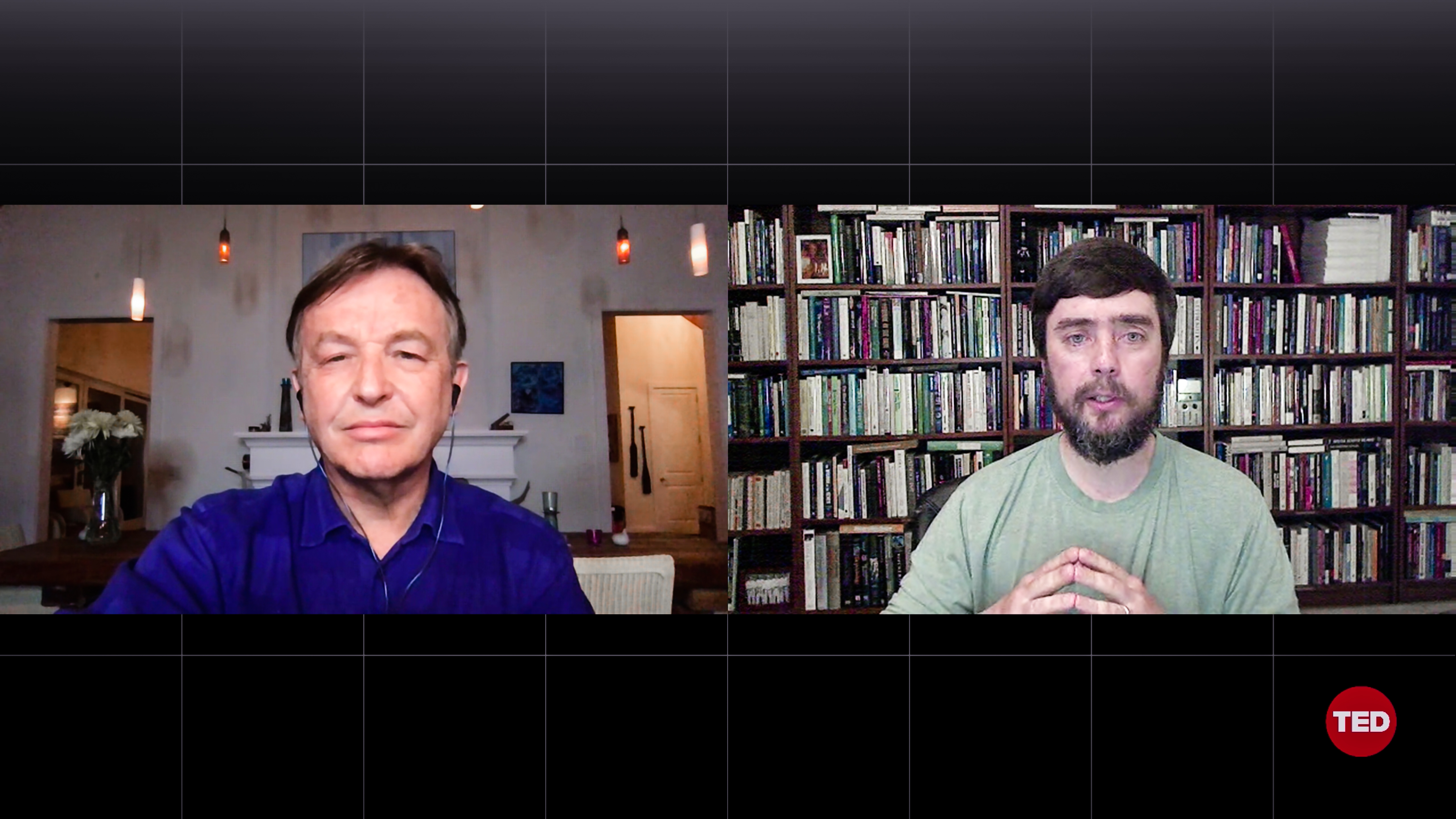
Biological programmer Michael Levin (right) speaks with head of TED Chris Anderson about the wild frontiers of cellular memory at TED2020: Uncharted on June 11, 2020. (Photo courtesy of TED)
Michael Levin, biological programmer
Big idea: DNA isn’t the only builder in the biological world — there’s also an invisible electrical matrix directing cells to change into organs, telling tadpoles to become frogs, and instructing flatworms to regenerate new bodies once sliced in half. If Michael Levin and his colleagues can learn this cellular “machine language,” human beings may be one step closer to curing birth defects, eliminating cancer and evading aging.
How? As cells become organs, systems and bodies, they communicate via an electrical system dictating where the finished parts will go. Guided by this cellular network, organisms grow, transform and even build new limbs (or bodies) after trauma. At Michael Levin’s lab, scientists are cracking this code — and have even succeeded in creating autonomous organisms out of skin cells by altering the cell electrically without genetic manipulation. Mastering this code could not only allow humans to create microscopic biological “xenobots” to rebuild and medicate our bodies from the inside but also let us to grow new organs — and perhaps rejuvenate ourselves as we age. “We are now beginning to crack this morphogenetic code to ask: How is it that these tissues store a map of what to do?” Levin asks. “[How can we] go in and rewrite that map to new outcomes?”
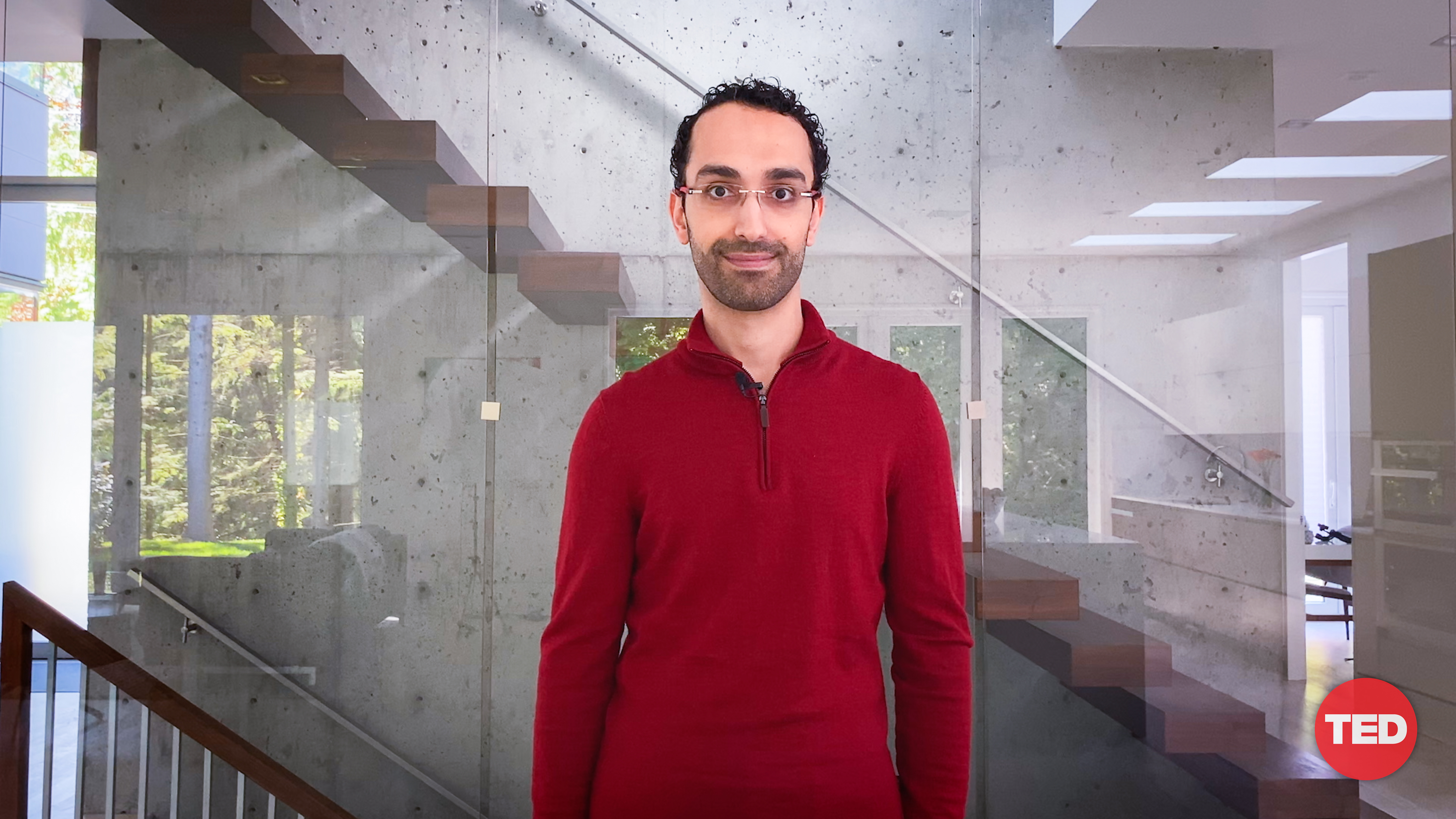
“My vision for the future is that when things come to life, they do so with joy,” says Ali Kashani. He speaks at TED2020: Uncharted on June 11, 2020. (Photo courtesy of TED)
Ali Kashani, VP of special projects at Postmates
Big idea: Robots are becoming a part of everyday life in urban centers, which means we’ll have to design them to be accessible, communicative and human-friendly.
How? On the streets of San Francisco and Los Angeles, delivery robots bustle along neighborhood sidewalks to drop-off packages and food. With potential benefits ranging from environmental responsibility to community-building, these robots offer us an incredible glimpse into the future. The challenge now is ensuring that robots can move out of the lab and fit into our world and among us as well, says Kashani. At Postmates, Kashani designs robots with human reaction in mind. Instead of frightening, dystopian imagery, he wants people to understand robots as familiar and friendly. This is why Postmates’s robots are reminiscent of beloved characters like the Minions and Wall-E; they can use their eyes to communicate with humans and acknowledge obstacles like traffic stops in real-time. There are so many ways robots can help us and our communities: picking up extra food from restaurants for shelters, delivering emergency medication to those in need and more. By designing robots to integrate into our physical and social infrastructures, we can welcome them to the world seamlessly and create a better future for all. “My vision for the future is that when things come to life, they do so with joy,” Kashani says.